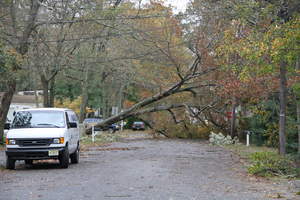WAUKESHA, WI--(Marketwired - Oct 23, 2013) - One year ago, Hurricane Sandy crippled the East Coast, causing billions of dollars in damage and leaving more than eight million customers without power. The economy came to a halt, losing an estimated $25 billion in business productivity as companies were forced to close due to a lack of power. Residents in the Northeast were defenseless against a storm of Sandy's magnitude and wondered how they could prevent this from ever happening again.
The answer is to prepare.
Disasters can happen anytime, anywhere, from hurricanes along the coast to blizzards in the Midwest, and the nation's aging power grid is ill-equipped to keep up with the demands of our fast-paced, digital society even in perfect weather conditions. When a severe storm hits, the grid is taxed further, resulting in more frequent and longer power outages.
"Preparing is only helpful if it's done well in advance," said Aaron Jagdfeld, President and CEO, Generac Power Systems (
Generac manufactures home backup generators that turn on automatically as soon as the power goes out and remain on until power is restored. That means homeowners will have heat, electricity, running water and food during even the worst storms.
Here are a few more storm preparation tips:
- Elevate important items in your basement to avoid damage from flood waters
- Remove dead or rotting trees or branches that could fall and cause injury or damage
- Install hurricane proof windows and doors if you live in a hurricane zone
- Create an emergency plan and a supply kit with non-perishable food, water, a battery-powered or hand-crank radio, flashlights and batteries, necessary medication and important paperwork
Additional storm preparedness information can be found at www.ready.gov/hurricanes.
If you'd like to produce your own story on storm preparedness, visit this page for additional information, b-roll and sound bites, pre-produced videos, still images and additional background materials. Use the URLs provided to add to your website, blog or social network.
